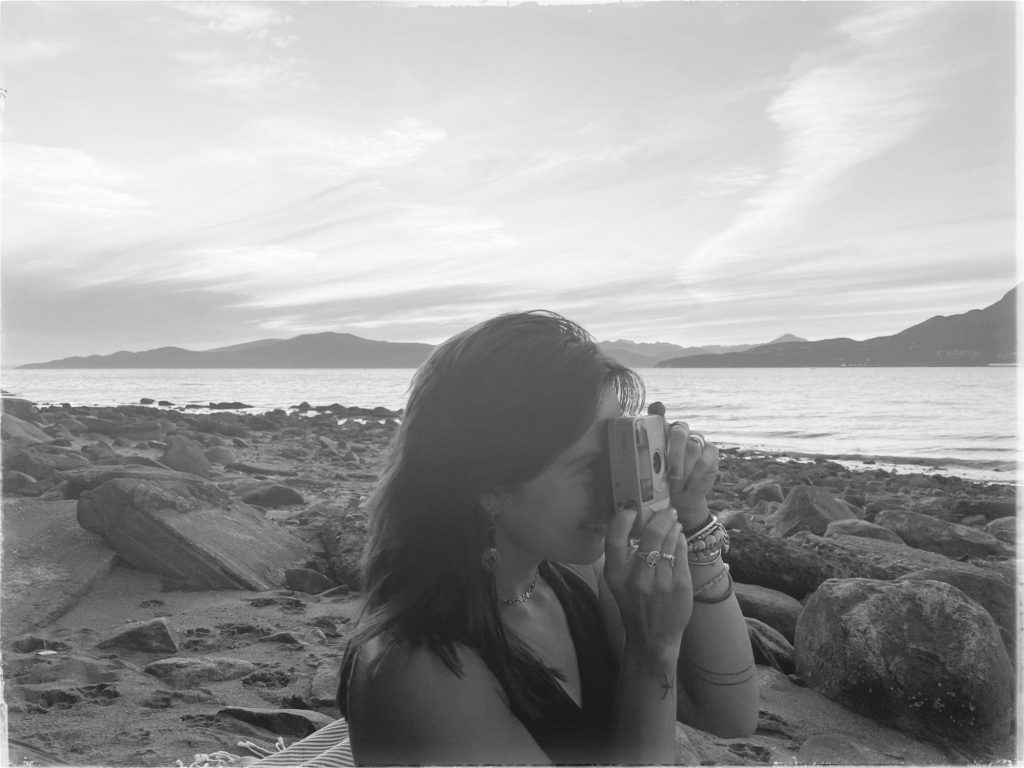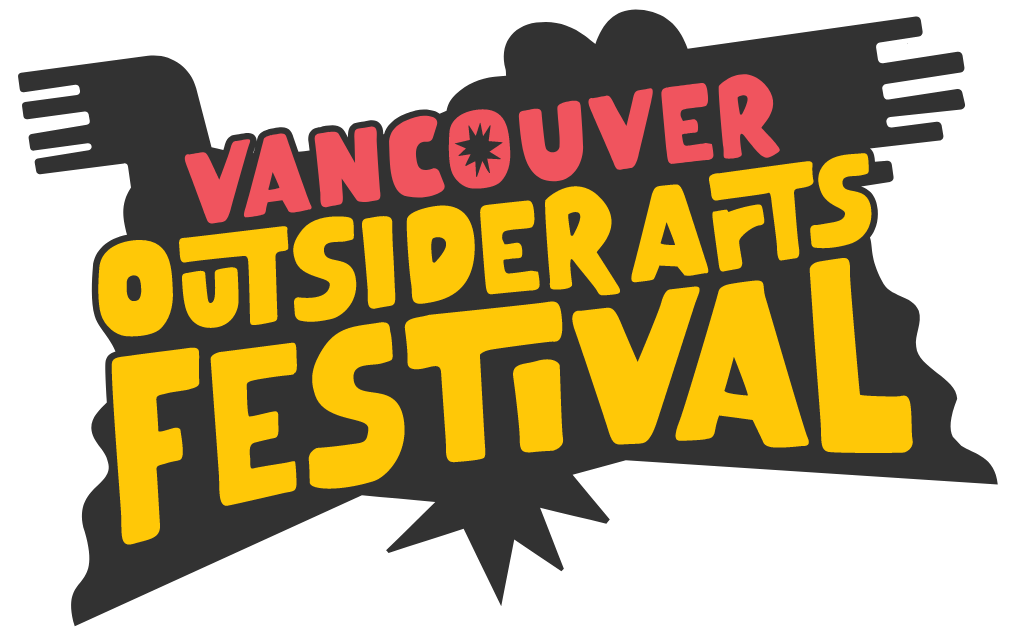VOAF 2022 Artist: Taylor Neal
Taylor Neal (she/they) is a film photographer and frontline worker showcasing photography that depicts the dialogue between bodies and their environments in a very intimate manner at the 6th Annual Vancouver Outsider Arts Festival at the Roundhouse from October 14-16.
They strive to gain deeper understandings of the endless complexity that is human experience, through translating life into the realm of the tangible via art, both verbal and visual.
This interview has been shortened for clarity and consistency.
Click here for more information about the artist.
How do you think your artwork connects to “outsider arts”?
“Outsider Arts” refers to the art and its creators outside the larger, mainstream art world. It continues to be dictated and formulated by a small community that holds power to designate fine art from low art, craft, and many other categories often not welcome in art spaces. The fine art world has within its make-up an extremely high barrier structure, and it is the goal of outsider arts to celebrate art that exists outside of these walls, outside of the hegemonic fine art uplifted in the mainstream.
As a woman in photography, I am very much an outsider. The photography world, especially the film photography world in which I work and create, is extremely male-dominant, both financially and energetic. Simply put, femme film photographers are rarely taken seriously as working photographers, and this causes substantial financial barriers as well as barriers to showcasing work and being welcomed into collectives, circles, and conversations. I have had several experiences walking into “the old boys club,” which is the film photography world, and people either expect me to work for free or assume that I know nothing about the discipline.
The content I produce is not welcome in many spaces and censored. I am passionate about capturing the relationships between bodies and nature, bodies in nature, and the dialogue between bodies and their environments in an intimate manner. Because of this, many platforms, such as Instagram, require me to censor my work. Many photos of women’s bodies have been taken down for “sexual content,” whereas photos of the same parts of male figures will be allowed to stay without question. This consistently calls into question the hierarchies within algorithms that prevent showing nature, as my work captures, on its most basic level, life being lived.
With this same light, capturing nature, I use photography to normalize the body away from sexualization – removing the sexual associations made with the nude as a way to confront the male gaze. Instead, I endeavour to create art from natural experiences; menstruation, body hair, laughter, sadness, queerness, relationships, sexuality, and anger – all of the things that come together to create the human experience. This makes many people uncomfortable. Menstrual blood makes many people uncomfortable. Sex makes people uncomfortable. Fat bodies make people uncomfortable. My art asks viewers to sit with discomfort, to reflect on where it’s coming from, and ask themselves, why?
The outsider is just the artist brave enough, to tell the truth, and that’s what I’m here to do. Unapologetically, radically, beautifully, through the capturing of light.
What type of barriers do you face to creating artwork?
As a white femme film photographer, my strongest barriers are based on the lack of being taken seriously, which leads to many financial barriers. People don’t want to pay for art if they don’t feel it qualifies as art, and this categorization has many colonial and patriarchal roots. I often laugh at the number of people that reach out for photos and expect me to work for free. These people would never ask the same of a male photographer; it just simply wouldn’t happen. And if it did, the man would laugh and demand his deserved compensation. It used to make me extremely uncomfortable to ask for the compensation I deserved, and as a result, I would do lots of work for free. Spaces like VOAF affirm the validity of the artist that has been devalued repeatedly by patriarchal perspectives on finances and worth. Spaces like these remind us that we do not need to work for free, nor should we be expected to.
Another key barrier to the showing of my art is the censoring of bodies presented outside of the male gaze. If a woman’s nude body doesn’t serve the male gaze, it will often be censored, or deemed “women’s art,” because people simply cannot fathom the idea of a woman’s body existing outside of its sexual service to men. Still, somehow, in 2022. I have seen this so many times it’s almost humorous. I have had men say to me, “god, you’re obsessed with pussies eh” and ask if I’m a lesbian, amongst many other bizarre sexually-fuelled questions. It is so challenging for many to separate bodies from sex, which has categorized my work as pornography in the past and deemed it unfit for certain publications.
It’s funny because my work aims to normalize bodies and desexualize them, yet again, this leaves people very uncomfortable.
Where did you get the inspiration for the artwork you are exhibiting? Who are your influences and what other artists inspire you?
I am constantly inspired by nature, by the sensuality of nature, and the slowness required to notice nature. Similarly, I am inspired by bodies and their innate connection to, and resemblance to, nature. How the shapes of bodies mirror the shapes in nature, how nature can elicit emotion, connection, and reflection, how nature can change our relationships to our bodies and how we feel in them – I see through my senses and strive to capture this in my work.
Imogen Cunningham, a female American photographer from the early 20th century, is my biggest photographic inspiration. Her intimate portraiture of bodies and nature, specifically flowers and fragmented bodies in black and white, has been the primary inspiration for how I see the world.
Give a brief description of your creative process.
There is no particular rhyme or rule to my creative process. I almost always have a camera with me, allowing my inspiration to come as naturally as the breeze blows.
In setting up a specific, structured shoot, it operates very informally. I value, above all else, creating safe, intimate, and comfy spaces with my subjects so my shoots are collaborative.
Usually, we will decide on a location together. I tend to like shooting folks in their homes or spaces chosen by them that are either special to them in some way or that they have been interested in exploring, as I find the space deeply informs the energy of the shoot. I want my subjects to feel as comfortable as possible. The benefit of shooting in the subject’s home or chosen space is the removal of the energetic stiffness that comes with the initial process of getting oriented in an unfamiliar space. They are already, on some level, comfortable in the space itself if they have a relationship to it, so from here, the rest of the shoot can unfold.
Usually, we’ll just put on some music, maybe have a glass of wine, whatever the subject feels they’d like to help them sink in. I am incredibly open to whatever vibe they’d like to create, so we start by sinking in together and hanging out. Then, once I start to feel an energetic shift, an exhale, a deeper sense of comfort, I’ll begin to shoot casually.
Each shoot unfolds differently, but the most beautiful part of my experience as a photographer is witnessing my subjects sink into their bodies, into comfort, and begin to express themselves. Of course, this happens at a different pace for everyone. Still, if you are intentional about creating a safe environment and carrying safety with you as the photographer, your subject will feel that, and slowly they will peel back their layers to reveal their true self.
I am aiming for authenticity every time. Safety is the main ingredient for authenticity.

What do you hope people take away from viewing your artwork at the festival? Do you want them to feel a specific emotion or come away with new ideas?
In viewing my art, I hope viewers feel their own beauty deep within their bodies. I hope folks can look at nature as a mirror and see a reflection of themselves. Their body hair mirrors the grass poking through the sand on a beach, the rolls of their tummy mirror the rock formations in the desert, and the way their emotions run as deep as the ocean.
I hope to offer safety; I hope to provide freedom; I hope to offer the ability to exhale and let yourself take up space.
